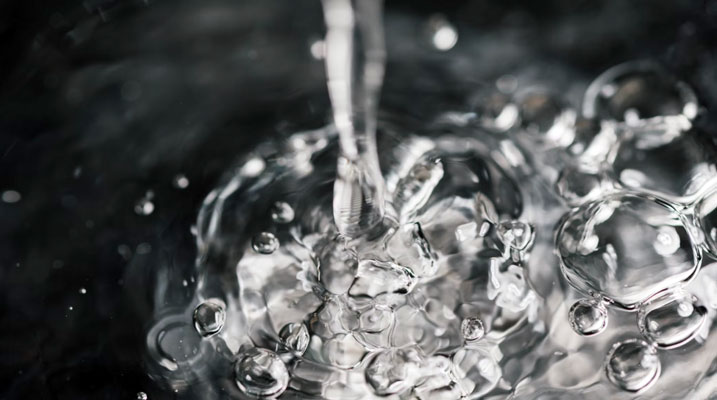The reliability of waterproof enclosures plays a critical role in protecting sensitive electronics from challenging environmental conditions. These enclosures are designed to keep water, dust, and other contaminants at bay, ensuring that devices can operate efficiently and safely. Understanding the different types of waterproof enclosures, their unique features, and suitable applications can help users make informed choices tailored to their needs.
Types of Waterproof Enclosures
Waterproof enclosures come in various forms, each designed for different applications and environmental challenges. Among the common types are NEMA-rated boxes, IP-rated enclosures, and custom enclosures built for specific needs. NEMA-rated boxes are manufactured according to standards set by the National Electrical Manufacturers Association, ensuring a level of protection from water and particulates. For users seeking specific functionality, IP-rated enclosures offer detailed classification based on ingress protection.
The ratings specify the degree of sealing against water and dust, making it easier to choose the right enclosure based on the expected environmental factors. The team behind BUD Industries says that understanding these ratings is crucial for selecting the appropriate box for each project, as they determine the effectiveness of the enclosure in protecting the equipment inside. Custom enclosures can be designed to meet unique specifications and requirements, ensuring a perfect fit for applications that standard enclosures may not accommodate. From unique shapes to added features, custom options can significantly enhance the performance of sensitive electronics.
Material Considerations
When selecting a waterproof enclosure, the choice of material is pivotal. Common materials used include plastic, aluminum, and stainless steel, each offering different advantages and disadvantages. Plastic enclosures are typically lighter and easier to mold into various shapes. They are resistant to corrosion, making them a popular choice for outdoor applications. On the other hand, aluminum enclosures provide durability and excellent heat dissipation, ideal for housing electronic components that generate heat.
Stainless steel, while heavier and more expensive, offers robust protection against corrosion and mechanical stress. Selecting the right material depends on the specific environment the enclosure will be exposed to, including factors such as temperature ranges, potential chemical exposure, and mechanical impacts.
Sealing Techniques
The effectiveness of a waterproof enclosure relies heavily on its sealing techniques. Various methods, such as gasketing, potting, and caulking, can be employed to ensure that no moisture or contaminants can enter the enclosure.
Gasketing involves sealing compartments with rubber or foam gaskets that can compress and adapt to different surfaces, preventing water ingress. Potting, on the other hand, involves filling the enclosure with a protective compound that can shield electronics from moisture and physical shock.
This method provides an added layer of security and is often used for delicate components. Caulking applications can be beneficial for sealing gaps and joints within existing enclosures, enhancing their waterproof properties without requiring complete replacement. Understanding these techniques helps users maintain the longevity and reliability of their devices.
Some designs use dual-seal systems for critical applications, offering redundancy in protection. The selection of sealing materials should take temperature resistance and chemical compatibility into account. Improper installation or maintenance of seals can lead to failures despite high-quality materials.
Regular inspection and resealing may be necessary, especially in demanding environments. Choosing the right sealing method for the specific application is essential for ensuring maximum enclosure performance.
Applications of Waterproof Enclosures
Waterproof enclosures are employed across numerous industries, reflecting the growing need to protect sensitive equipment. In telecommunications, for example, enclosures safeguard antennas and transmitters installed in various outdoor environments.
Effectively balancing durability with accessibility, these enclosures ensure that essential communication systems remain operational, regardless of the conditions. In the marine industry, waterproof enclosures house navigational equipment, sonar systems, and communication devices, all of which must withstand harsh maritime environments.
Similarly, the automotive industry relies on these enclosures to protect control units and sensors from water exposure. Healthcare benefits from waterproof enclosures, especially in medical devices used in environments subject to spills or contamination. These enclosures guarantee that equipment stays reliable and operational in high-stakes situations by shielding delicate parts.
They are widely used in renewable energy systems such as solar and wind installations, where exposure to the elements is constant. Industrial automation and manufacturing settings utilize waterproof enclosures to shield programmable logic controllers and other sensitive electronics.
Even consumer electronics like wearable devices and outdoor lighting systems integrate these enclosures to improve longevity and performance. As technology continues to expand into more rugged environments, the importance of reliable waterproof protection will only grow.
Maintenance and Testing of Waterproof Enclosures
To ensure continued protection, regular maintenance and testing of waterproof enclosures are necessary. Routine inspections allow users to identify any signs of wear or damage that might compromise the integrity of the enclosure. Checking seals, gaskets, and surfaces for cracks or degradation can help maintain the waterproof capabilities of the enclosure.
Various testing methods are employed to confirm that an enclosure meets its protective ratings. The application of water pressure tests, humidity tests, and dust intrusion assessments can provide valuable insights into the enclosure’s efficacy. Ensuring regular maintenance and thorough testing can prevent unforeseen failures and extend the operational lifespan of the equipment housed within.
Keeping a maintenance log can be beneficial for tracking inspection intervals and addressing recurring issues. Replacing worn-out components promptly, especially seals and locking mechanisms, can minimize downtime and protect internal systems from environmental exposure.

Choosing the Right Waterproof Enclosure
Selecting an appropriate waterproof enclosure involves considering multiple factors, including environmental challenges, material requirements, and applications. Each enclosure serves a targeted function, making it essential to match the specific needs of the application with the capabilities offered by the enclosure. Users can select a solution that guarantees water protection and successfully handles more general environmental issues by carefully weighing the previously described factors.
It’s important to evaluate the level of ingress protection (IP rating) to ensure the enclosure meets industry standards for waterproofing. For outdoor applications, UV resistance and resistance to extreme temperatures may be necessary. In marine environments, corrosion resistance becomes a critical feature to look for. Installation ease and accessibility for maintenance should not be overlooked, as these impact long-term usability. The right enclosure protects sensitive components and contributes to the reliability and safety of the overall system.
Understanding these principles will aid individuals and organizations alike in making informed decisions regarding waterproof enclosures, prioritizing the safety and usability of their sensitive electronic equipment and systems.









